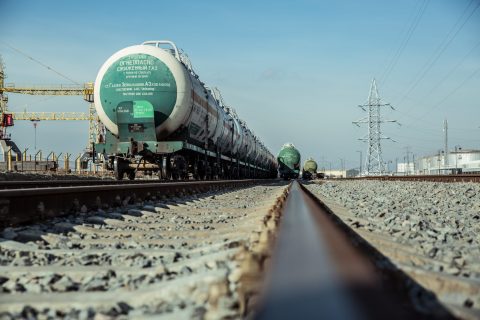Fresh Norwegian salmon on the train to China

By the end of this year fresh salmon from Norway will be transported to China by rail. This will be done through Russia, which now permits the transit of previously sanctioned products through its territory. Micael Blom, railway consultant in the Nordic countries is fully engaged with this groundbreaking new supply chain.
The journey of the salmon starts in Narvik, in the north of Norway. From here it is transported across the Nordic countries via Boden, Haparanda/Tornio and finally to Kouvola. In this Finish town just kilometres away from Russia, a railway connection to China is already up and running. However, fish could not be transported until now.
Ban lifted
Effective per 1 July, Russia has lifted the ban on transit traffic for a range of products that were previously sanctioned. This includes agricultural products and foodstuffs. The measure is subjective to certain conditions and a lot remains unclear, but that does not stop Blomster and his partner Railgate Finland in Kouvala from planning the first journey. “We expect to make the first shipment by September/October”, said Blomster.
There is a huge demand for salmon in China. This demand is currently met by air transport. Around 30,000 tonne of salmon is shipped from Helsinki to China per year. This can all be done by train, which is much cheaper, Blomster aruges.
Nordic Silk Road
That rail is an ideal transport solution to China occured to Kouvola Innovation Oy, operator of the terminal in Finland several years ago. Kouvala is located in the south-east of the country. A cargo train is on Russian territory within an hour and from there, it could take various routes to multiple locations in China, or even Japan. The route operational at the moment leads though Kazakhstan and terminates in Xi’an. This rail freight service is offered in both directions almost every week.
When taking this route into Europe, the journey from China takes only 12 to 14 days. And that is not only because of its strategic location. Finland has the same broad gauge as the CIS states, so the train only needs to switch to another railway network once, instead of twice. “We are heavily betting on rail transport to China”, said Managing Director at Kouvola Innovation Oy.
East-west balance
At the moment, all kinds of products from the Nordic region are transported to China, such as machinery, wood, wine and beer, Husu explained. But the opening up for previously sanctioned food products offers enormous potential. “We have been working on this for many years.”
At the same time, a lot of work remains to be done. For example, there will be in imbalance between east- and westbound traffic to the Nordic countries, with the majority of the containers travelling eastwards. “We will need more cargo shipments from China to Finland, in order to get the containers back. At the moment we have more export than import”, said Husu.
The cooperation between the Nordic countries is focussed on the logistics chain from Norway to Finland. This transport is currently mostly organised by trucks, while a lot could be done by train. This requires a huge modal shift, but it also requires technical solutions. “There is a different railway gauge in Narvik and Haparanda”, Husu explained.
Temperature control
A more practical consideration is temperature control along the journey, and this is something that is already in development. The technology from BluWrap should ensure that the fish stays fresh all the way, explained Blomster.
The technology company uses oxygen management techniques to create and maintain an all-natural, controlled atmosphere environment that suspends time. In this way fresh fish and other proteins can be transported virtually anywhere in the world without the need for ice, environmentally harmful polystyrene, or expensive airfreight.
Russian authorities
While all these factors are carefully taken care of by the ambitious railway partners, there is still a lot of ambiguity around the new legislation announced in Russia. The Russian government is opening a special department that will handle all transit traffic through Russia. Before we can send a shipment, this must have the approval of this department. The department was set up in the second week of July and we do not know how and when this department will start functioning”, said Blomster.
Similarly, the necessary arrangements will have to be done in China, as not every product may enter China in every province. There are rules about this and sometimes products are first sent to the customs authorities of another province, before they can be forwarded to their final destination. For this new type of products, new rules will have to be formed”, explained Xinyao Zhang from logistics company GVT Intermodal.
Also read:
- Russia lifts ban on transit of sanctioned EU products by rail
- Kilometre-long trains and no gauge switch: this is Railgate Finland
- Finland-China train popular enough to be regular trip
You just read one of our premium articles free of charge
Want full access? Take advantage of our exclusive offer






